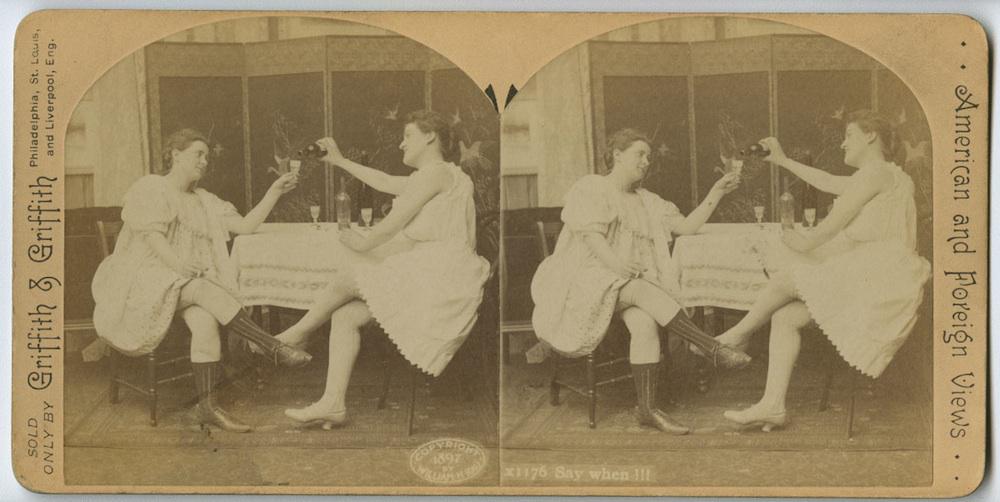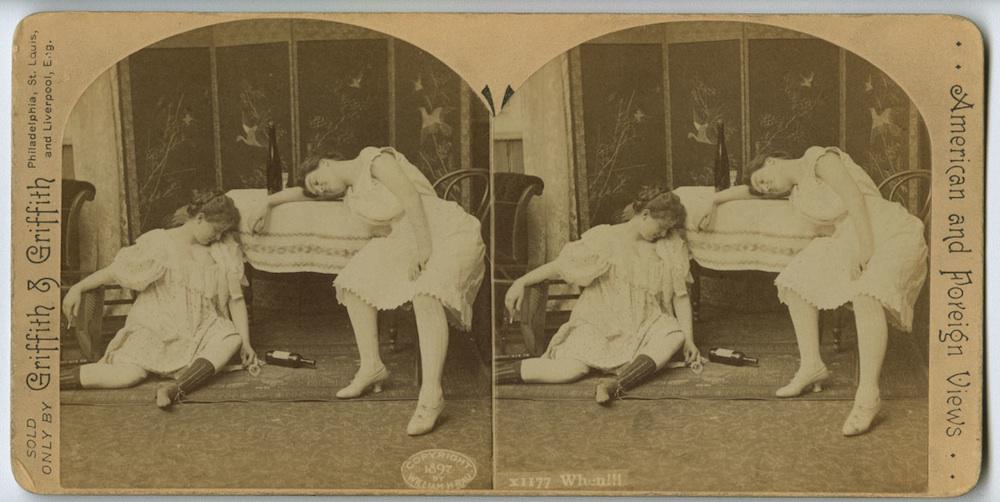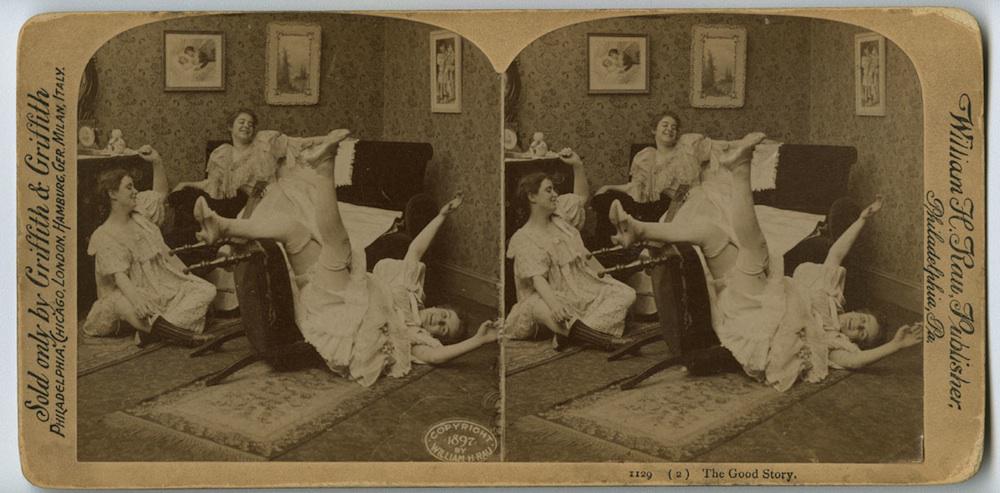The Vault is Slate’s history blog. Like us on Facebook, follow us on Twitter @slatevault, and find us on Tumblr. Find out more about what this space is all about here.
These mildly provocative stereographs were marketed for parlor use in the late 19th century. Used with a stereoscope, the side-by-side images would render in 3D. (If you happen to have a pair of 3D glasses, you can use them while looking at the stereographs’ page on the Library Company of Philadelphia’s website, to mimic the effect.)
Viewers looking at stereographs in the boudoir genre—which was popular—were imagining what women did when they were alone together. This was a glimpse into a private realm. If onlookers were vaguely titillated, that voyeurism was mixed with amusement. Explaining the joke, Library Company curator Connie King writes, “The humor for 19th- and early-20th-century viewers was based, in part, on the assumption that women were innocents where sex was concerned.” So the sweet (if staged) unselfconsciousness of the high-kicking, wine-drinking ladies was part of the fun.
William Herman Rau, the Philadelphia photographer who made these images, had a wide-ranging career, working as an official photographer for a government expedition sent to record the transit of the planet Venus in 1874, as well as for the Lehigh Valley Railroad. Genre scenes like these would have been staged in his Philadelphia studio, where he worked as a portrait photographer when not on the road.

Courtesy of the Library Company of Philadelphia.

Courtesy of the Library Company of Philadelphia.

Courtesy of the Library Company of Philadelphia.

Courtesy of the Library Company of Philadelphia.

Courtesy of the Library Company of Philadelphia.